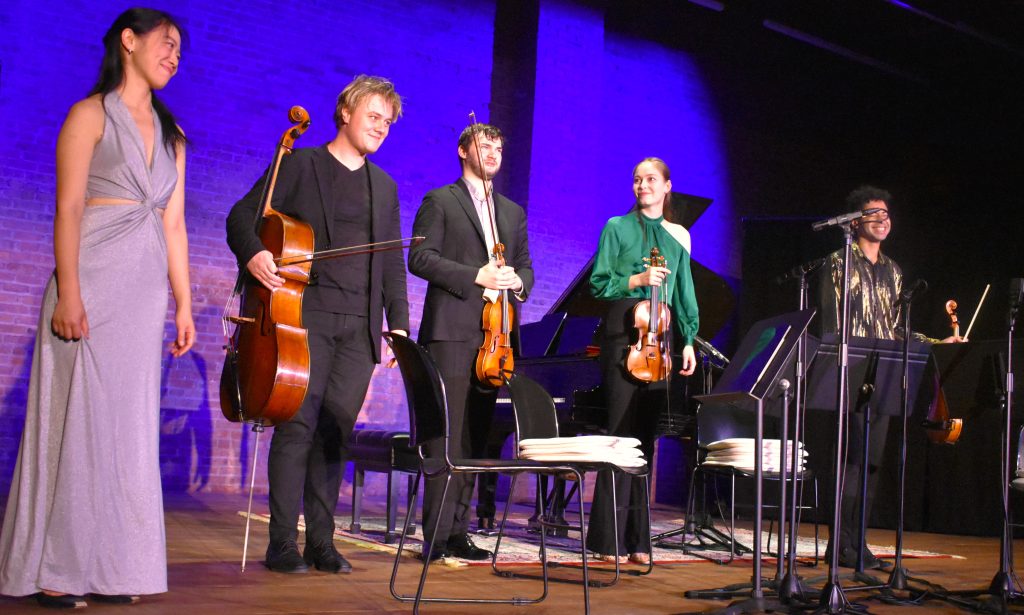
by Kevin T McEneaney
Virgil Thomson’s essay “On Being American” (New York Herald Tribune, 25 January 1948) pointed out that World War II destroyed provincial attitudes while simultaneously allowing the United States to be at least equal to Europe’s classical musical tradition due to the infusion of composers from abroad, making the United States a fruitful, musical melting pot. Something similar is occurring today with composition as composers more freely travel about the globe through competitions, grants, and residencies. International musical hybrids are now in fashion. (This is also true in contemporary painting and fiction.)
Mu Kkubo ery’ omusaalaba (On the way of the Cross) for String Quartet by Uganda composer Justinian Tamusuza (b. 1951) opened the concert. This work is a spiritual meditation on the medieval Roman Catholic tradition of meditating on twelve suffering depictions of the illegally crucified rabbi whose martyrdom founded Christianity. Since the work depicts suffering, harmony in the composition is heavily chromatic. Melodic phrasing evokes Ugandan musical motifs, especially the dance rhythms of the author’s Baganda tribe, including sliding pitches and modal harmonies. One is invited to meditate on cruelty in the past, as well as war and persecution in the present. Jordan Bak on viola delivered passionate coloring in the first movement. Deep emotional resonance was provided by Nathan Meltzer and Geneva Lewis on violins in the second movement. Jonathan Swensen on cello supplied plangent, eloquent gravitas.
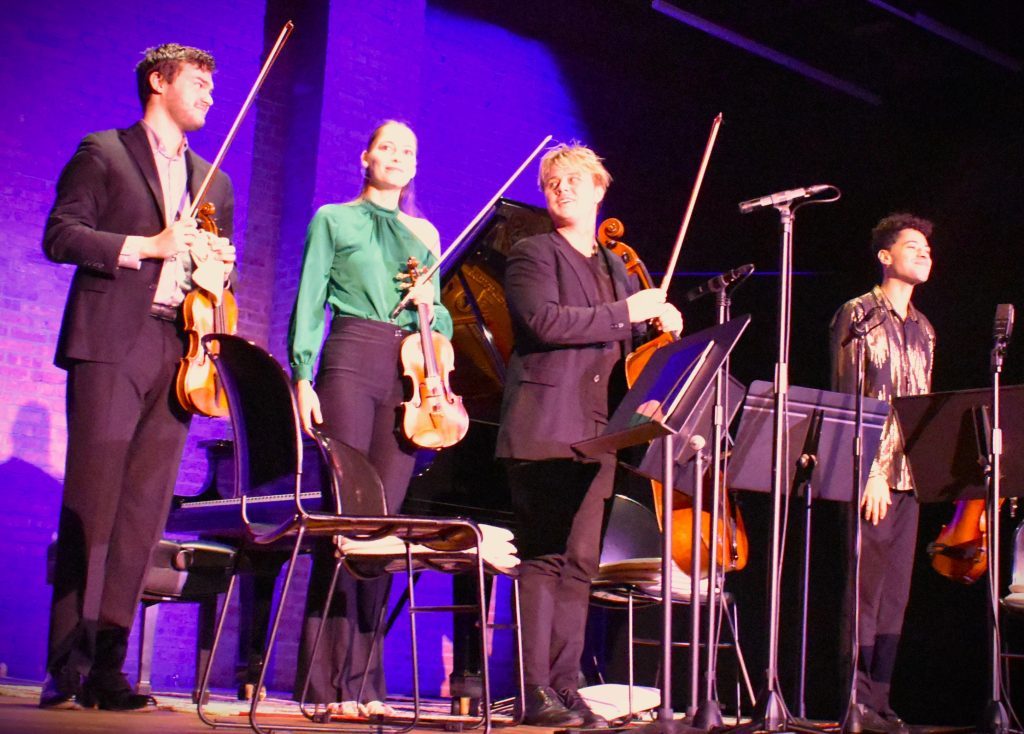
Trifolium for Piano Trio (2005) by Gabriela Ortiz (b. 1964) refers to the plant usually called clover, a symbol of unity with diversity. Latin American and Afro-Cuban rhythmic patterns are woven into classical music structures. Sophia Zhou on piano nailed percussive, syncopated rhythms with joyous delight as Geneva Lewis on violin led with infectious tunes supported by Jonathan Swensen on cello who evoked deft foot stomping. Dissonance and harmonic resolution playfully seesawed in this melting pot of Mexican tunes to create a delightful hybrid that integrates several cultures with propulsive warmth!
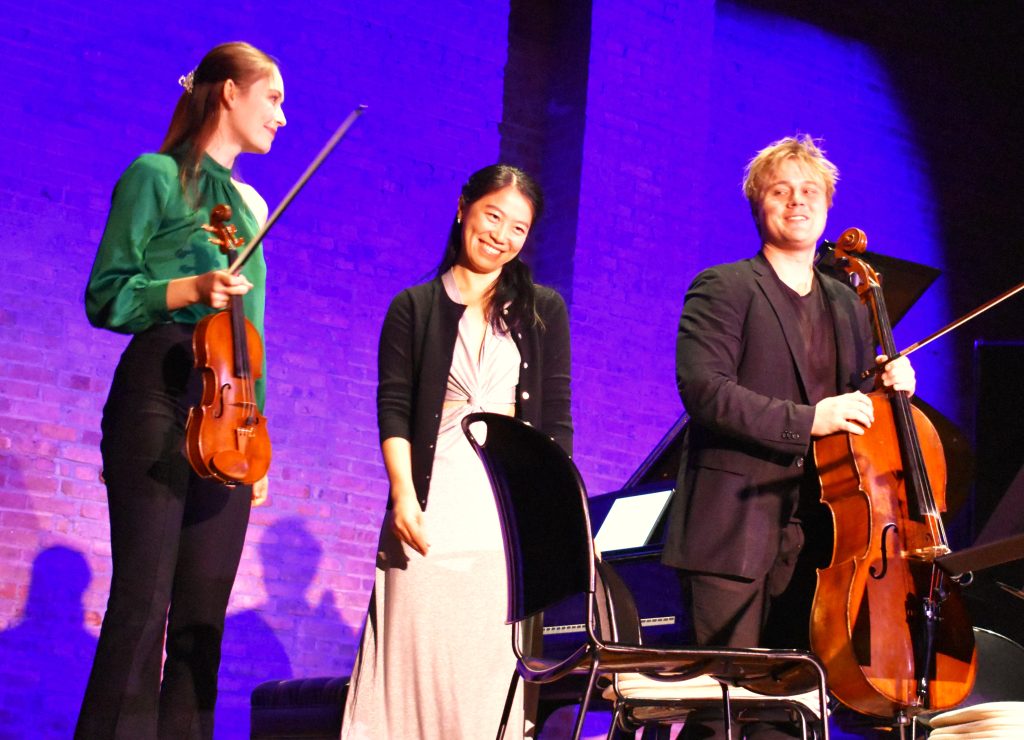
Carrot Revolution for String Quartet (2005) by Gabriela Smith (b.1964) was inspired by the nineteenth-century Pre-Raphaelite British painter, William Holman Hunt who said to paint a carrot with great precision and intensity would be revolutionary. This eclectic work features a heady mix of far-flung musical elements from Georgian folk songs to Gregorian chant and Celtic folk tunes, an intricate quilt that rises to a memorable crescendo blending many musical threads. The commanding unity of Meltzer, Lewis, Swensen, and Bak was awesomely impressive! This work conveyed the theme of looking at the past with an exciting new vision from a contemporary viewpoint.
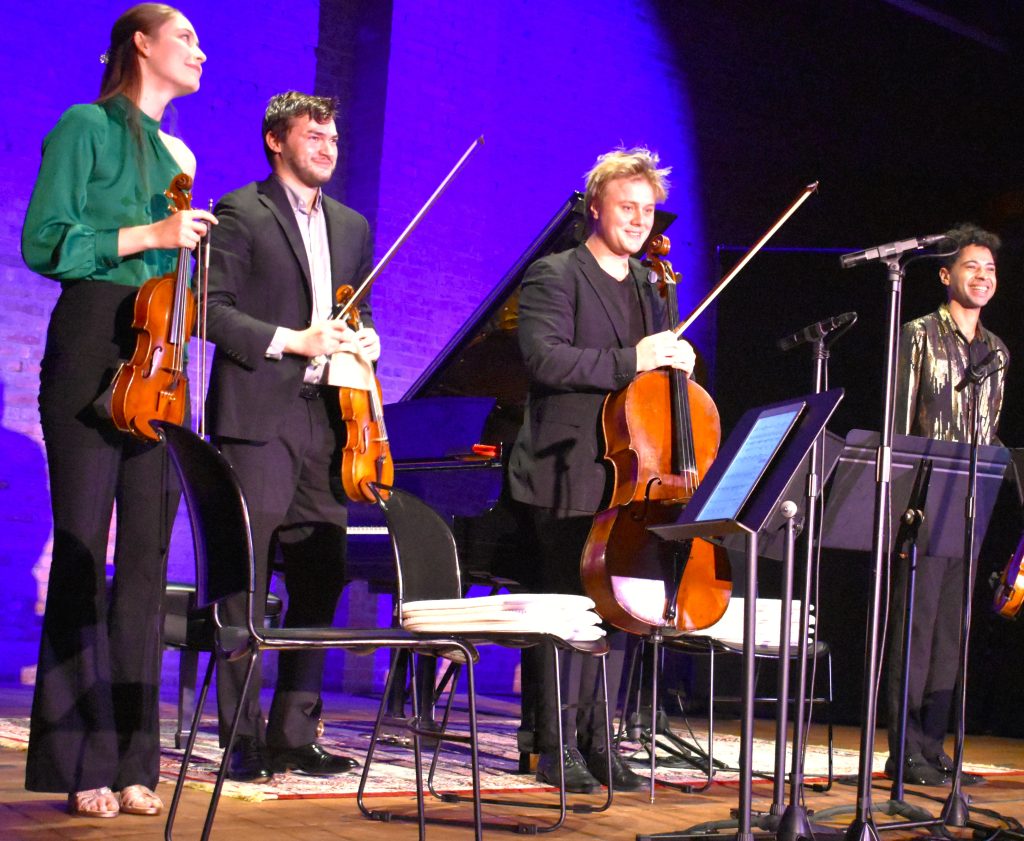
Piano Quintet No. 1 (1923) by Ernest Bloch (1880-1959) presents what some critics acclaim as his greatest composition. Bloch fled Switzerland during the First World War and came to the U.S. This composition reflects upon that war: there is much dissonance, intricate construction, and the use of quarter tones. Bloch thought good composers had prophetic powers with profound emotional force and here offered a return to Neo-classicism in the face of surrealism and futurism. The work features vigorous tone clusters, ascending and descending leitmotifs that create mystery, reflection, and tension. Elements of the medieval Dies Irae motif appear in all three movements with the eloquent cello of Swensen….
Quarter-tone intervals appear only sporadically in the first movement. The second movement plunges into traumatic gloom, melancholy grief, and intense lamentation; there is a descending motif played by Sophia Zhou on piano and the strings reply in a wail of high piercing notes of luminous incandescence where the violins of Melzter and Lewis soared.
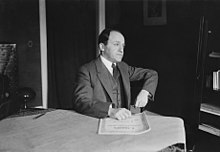
The final third movement becomes tragically reflective before it resolves in a euphoric climax with violins and viola; there is an orgiastic crescendo (as in Smith’s Carrot Revolution). Bak’s viola responded with gentle contemplative emotion, which Bloch declared to be the peace that one accepts when prioritizing the spiritual over the material. This extremely difficult and transcendent work (rarely performed today) demands incredible unity to play. This ensemble delivered a powerful memory to treasure!
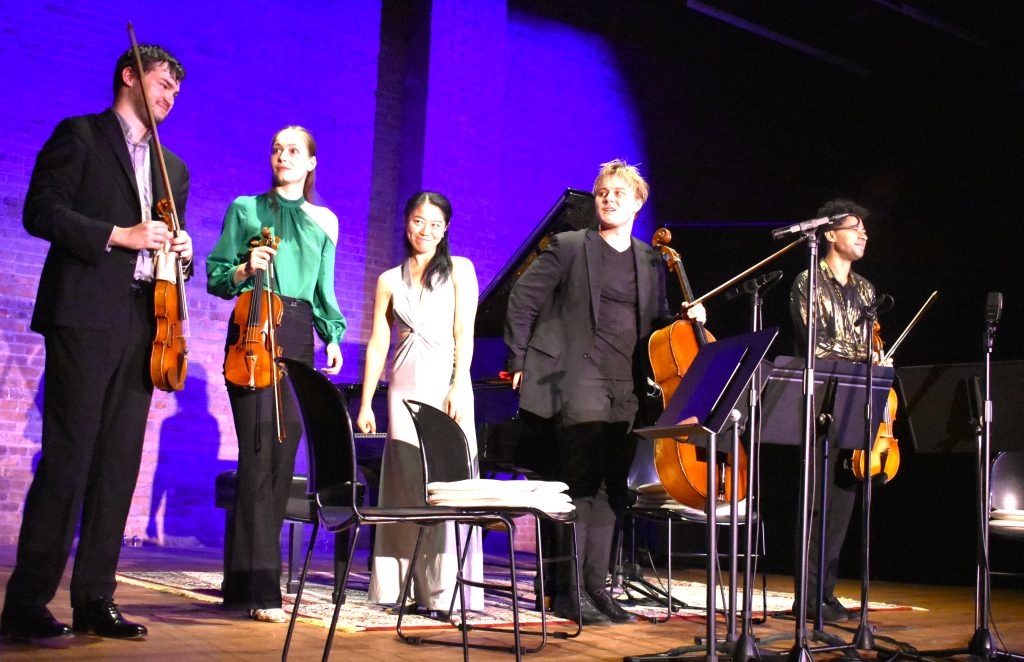
P.S. The Green Room Ensemble, Inc. is a non-profit chamber music organization dedicated to the crafting and presenting of new music and historically unexplored works by composers from a variety of backgrounds and heritages.